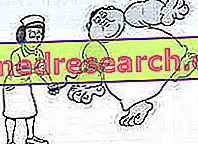Related articles: Dental malocclusion
Definition
Malocclusion is a defect of the occlusion between maxillary and mandibular teeth. In fact, in fact, the upper and lower tooth elements are in close contact with each other, with the buccal cusps of the upper arch positioned outside with respect to the corresponding lower tooth elements. This conformation allows the masticatory forces to be distributed and prevents cheeks and lips from being bitten.
Malocclusion is often the result of the disproportion between the jaw bone and the size of the teeth (ie the jaw is too narrow or the teeth too large to be correctly positioned). The anomalous contact between the dental arches can also derive from the infantile habit of sucking the thumb or fingers over 4 years of age, from reconstructions and dental appliances performed incorrectly, from bruxism (tendency to clench the teeth, especially during the night) or facial trauma. Even the loss of one or more teeth can cause a malocclusion, except in the case in which a prosthetic device is placed (eg a bridge or a partial prosthesis). Other possible causes of malocclusion are acromegaly, cleft lip, cleft palate, nail biting and the presence of supernumerary or malformed teeth.
Possible Causes * of Dental Malocclusion
- Acromegaly
- Bruxism
- Cleft lip
- Cooley's disease
- Onicofagia
- cleft palate
- Marfan syndrome
- Prader-Willi syndrome
- Feto-alcohol syndrome
- Trisomy 13
- Trisomy 18



